August – September 2022
After an easy flight, the 28 of us who are on this part of the trip were met at the Copenhagen airport and bussed to the center of town. Once there, we walked to Nyhaven Faergekroen and had lunch of “fruit of the sea” plate and a local beer in an underground restaurant. We then walked around the area of Nyhaven where a canal runs down the middle of the avenue with various boats docked along-side. Hans Christian Andersen lived 3 different times on this street because it was close to the Royal Theater. We then walked along the wharf seeing the Play House Theatre and the Opera House opposite us across the water. We then traveled along the Sankt Anna Plads to our hotel – the Phoenix Copenhagen which was once a Royal Palace. It has many rooms and our room has a chandelier. We then strolled to the local grocery for some snacks and on to the Royal Gardens where we explored the beautifully manicured grounds. At the far end of the gardens is Rosenberg Castle which was just closing for the day. In the gardens, we saw locals playing a drinking game with a throwing stick and numbered pins, young adults playing spike ball, and some children playgroups on the ground with bicycles everywhere. From there, we met our guide, got our metro passes, and learned to use to use the local metro transport by going to Tivoli the world’s first amusement park. We arrived in time to see a ballet story in progress and then walked the park admiring the lights and creativity. We stopped for beer and pizza at Mazzolli’s and then took the metro on our own back to the hotel.
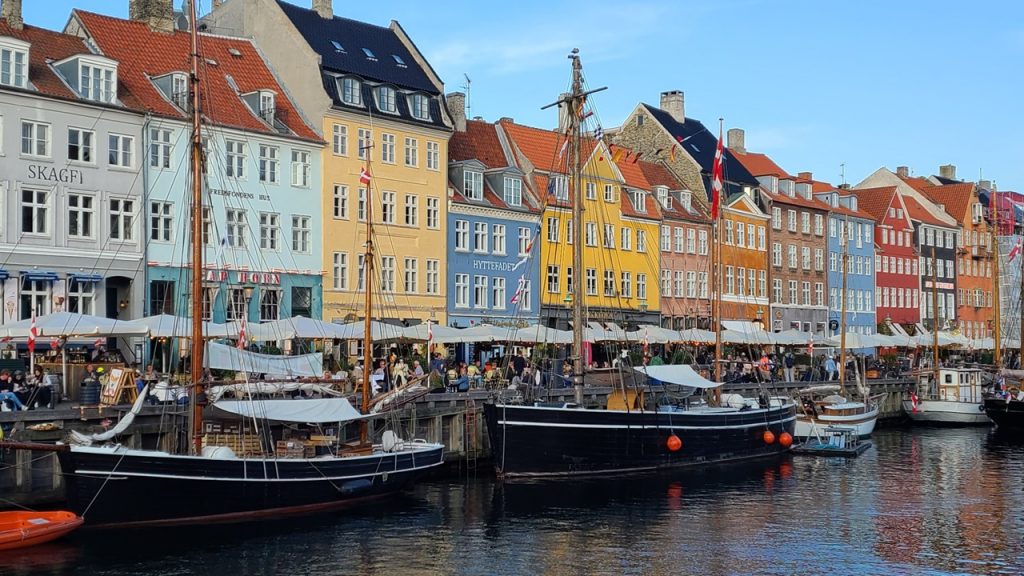
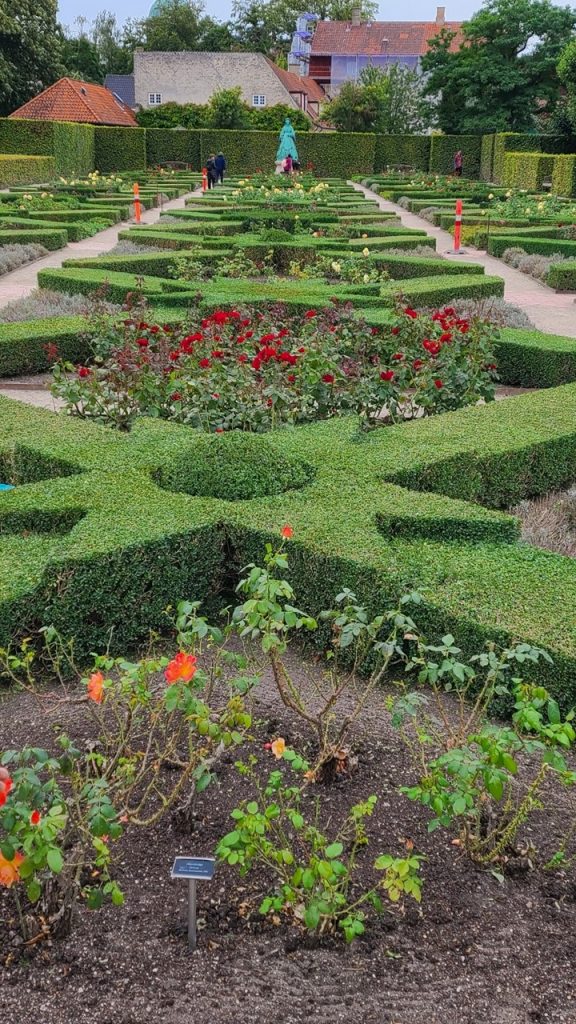
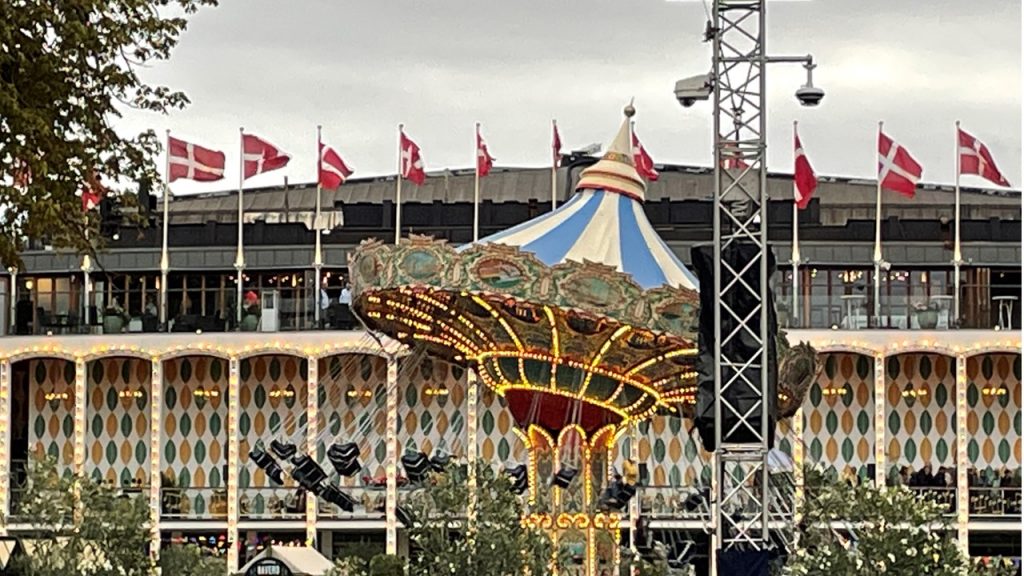
Friday morning began with a walking tour after breakfast where we went to the Odd Fellow Palace across from the hotel to Saint Anne street and the church of the army. Along the way, we noted “stumbling block” embedded in the pavement in commemoration of Jewish people taken from there during WW II. There are 5×5 brass plaques in the sidewalk with people’s names placed in their memory. We explore the local streets and remark at the renaissance architecture with its Dutch gables, and copper parapets. In the area called Fredericksburg we encounter a bust of Franklin D. Roosevelt who is credited with helping to liberate Denmark, and we pass the Swedish embassy and a house where Hans Christian Anderson once lived. We wander towards the harbor where we find the Amalia Bourg – an Octagon-shaped square where several Royal palaces are located, including queen Margaret’s and the Crown Prince’s. Princess Beatrice’s home includes a green-doored museum where is kept the world’s first original Fabergè egg. From the waterfront, one can see the Opera House and the famous Marble Church. The harbor water so clean that one can swim in it, as it is considered a recreational harbor only for shallow draft vessels with no industry are allowed here. Strolling along the harbor we see the national bird – the swan – swimming along, along with the historic F352 ship museum – the ship famously remembered as having accidently fired the “oops missile” into a group of summer homes. At the “Point” there is a canon salute fired daily at 7:30am, and in the harbor is docked the Royal yacht, the “Danne Breog”.

The Öresund – the sound of water between Denmark and Sweden – is full of windmills. Along the shore is the massive Maersk building with its white 7-pointed star. At the end of the harbor is the Poseidon Gate and the Gefion Fountain. Beyond this is the “English Church” and the gates to the army citadel with its moat and swans. Beyond the citadel is the “Little Mermaid” which we well come back to visit another day. Heading back from the waterfront, we pass remnants of some of the 44 bunkers from WW II that have been left in public spaces as reminders. We continue back past the Design Museum, the Russian Church and the Marble Church, where we catch the Metro to Gammel Strand to stroll along the longest pedestrian street in Denmark – 4 miles long. We are also informed that, by law, no street can have sharp 90 -degree corners because fire engines would not be able to maneuver around them. From the walk, we can see the underwater sculptures, and the Christiansburg House of Parliament. We decide to explore the National Museum and walk through the history of Denmark from 1600-1800 and especially enjoy the historical toy section. After stopping for a sandwich for lunch, we take the Metro back to hotel. From there, we explore on our own and walk back to Rosenberg Castle and toured the building, especially the throne room and the vault with the Crown Jewels. Then we go across the street to enjoy the Botanical Garden, especially its the pond, the palm greenhouse, and the spectacular butterfly garden. After enjoying a glass of wine there, we return to hotel. That evening, we meet our guide and fellow travelers for a dinner of street food across the bridge at Nordatlantens Brugge to the Granlanske Hendas Placs a street food court alongside the canals with a wide range of choices of drink and food. We enjoyed gin and tonics and gyros before returning to the hotel for the evening.


The next morning, we were up early to walk to the local Starbucks before meeting our group to catch the Metro and meet a canal boat for a 1-hour water tour of the harbor. We cruised past Parliament, the National Bank, and the Opera House before heading up some smaller canals where there were many small apartments. We went past Copenhill – the novel waste treatment center, past numerous Navy vessels, the Royal yacht, and back to see the Little Mermaid and the Citadel from the water. After returning to the dock, we walked to the “Bloc” – the Danish Architecture Center where we toured the Space Saga, women in architecture, chairs and rode down the indoor 4-story slide. From there, we walked to Hejbro Plas (an outdoor plaza with restaurant) where we had sandwiches and a beer. We then left the group to explore the city’s LEGO store which contained an awesome display of Lego creations and numerous kits. Then, it was Metro back to the Marble Church and a short walk back to the waterfront to visit from the shore Hans Christian Anderson’s Little Mermaid statue. On the way back to the hotel, we toured the local Design Museum and enjoyed the exhibitions of “what if tomorrow”, “iconic chairs”, and “snuff boxes”, before returning to our room to get ready for dinner. In coming to the lobby to meet for dinner, we are surprised to see couples in ball gowns and formal attire ( military navy and army, tuxedos, and tails) walked through. Down the street at the National Theater was a reception for Queen Margaret – 50 years on the throne. Most of the parades and celebrations had been cancelled due to Queen Elizabeth’s death (her cousin) just days before, however, this private ball for her was still taking place. We all waked to a Vietnamese cafe for a dinner of vegetable rolls and BBQ pork before calling it a night.

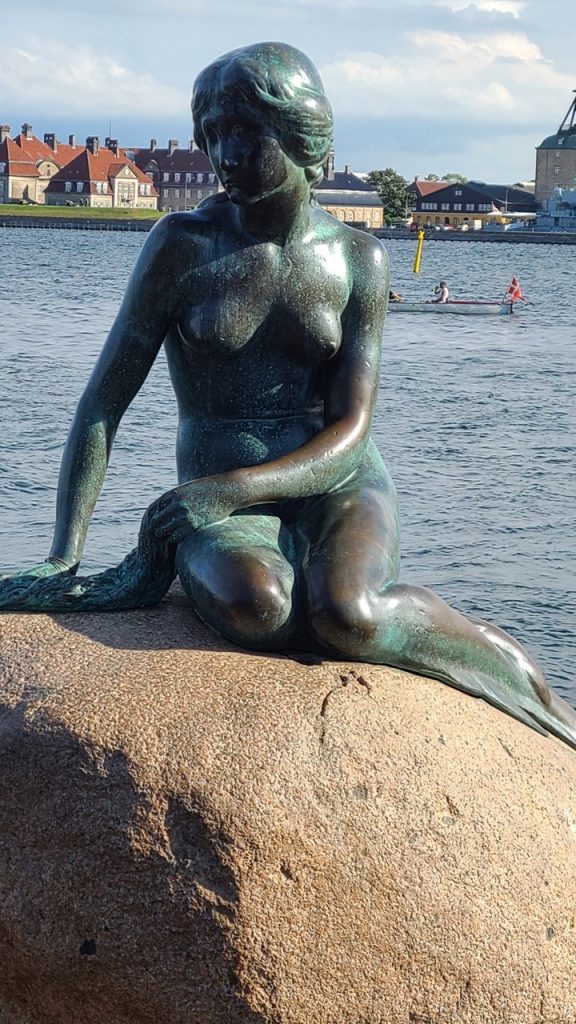
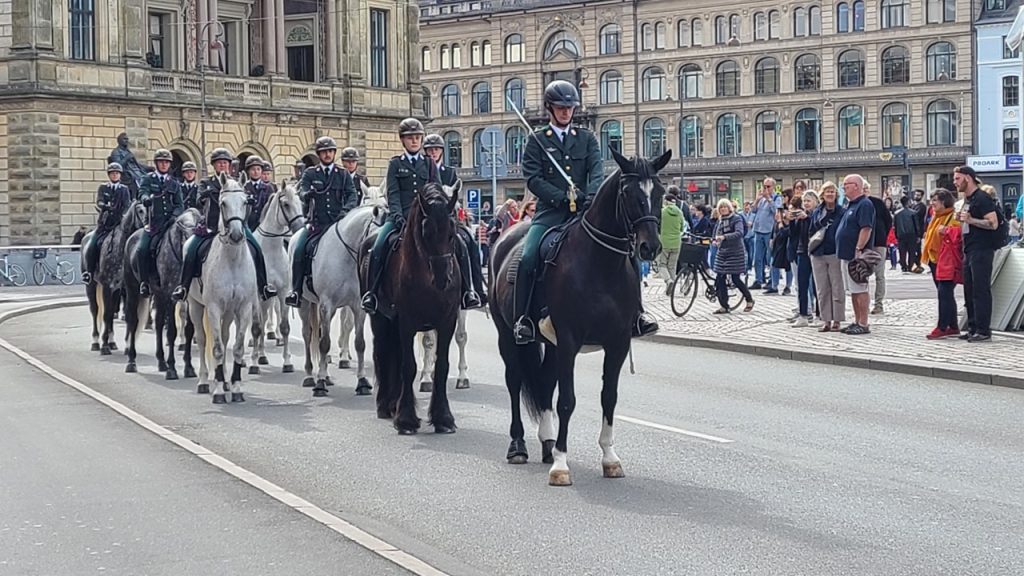
Sunday morning after breakfast, we all met and took the Metro to Christiana, an area of town famous for art and free expression. The area was originally a military base that was closed in the 1960’s. In the 1970’s, squatters and hippies took over the area and a free spirit, peace and love, and drug culture took over the area. By 1973, an agreement with the government was put in place for them to use city sewage, but they would be responsible for their own recycling, their own schools, daycare, etc. No one “owns” property there as all property is by free “rent” that includes a “tax” that is paid back to the community, (1,200 DK/month). The Community elected elders decide who can live there and where they can live. They are responsible for their own policing and “soft” drugs are allowed within their limits. They make money off tourists who come to visit the unique social experiment. They follow no Danish rules. “Pusher street” is a green light district which is an open market for marijuana created to make the business less criminal.

There are no sales to under 18 years and no photographs are allowed in that area. No hard drugs are ever allowed there and if someone gets caught, they are thrown out or sent to rehab. There are no gangs allowed. Our guide for the area is a former London IT entrepreneur who was a street artist in Paris before settling in Cristiana. He arrived 10 years ago. Christiana is divided into 15 villages where the people decide their personal economy and how they want to live there. It boasts 18 stages (9 indoor and 9 outdoor), supports 90 factory workers, and its total population is 900 people (700 adult and 200 children). It receives ~2 million guests year. Most residents are crafts-people and artists of all kinds – some make it big and some just live there. There are also a number of “social vulnerables” – refugees, mentally ill, homeless – about 1500 hang out there. However, all people are welcomed on equal terms as long as they respect others.
300 residents work in the downtown area, and those who work on Pusher street selling pot must live within Christiana. The area is ~2 kilometers long with one entrance and one exit. They encourage gardening and encourage wildlife habitation, currently hosting ~300 animals and a variety of plants.
Christiana community rules:
1- Take care of everyone
2- Democracy – but must talk till all are in agreement (they take no votes) – everything is decided through meetings
3-No one may buy or sell a house or land. There is no cost, but one is required to maintain it by oneself. Children cannot inherit property, but can stay if they already live there.
Limitations: Because it was an old military munitions base, there is no digging, no underground structures, no water sports, no swimming or skiing in the lake. Unless a garden is raised and made with imported dirt, no plants or berries growing on the ground can be eaten. Anyone can call a meeting of the community – time and place is published in the local magazine. Everyone is invited and everyone can have their say. Decisions are by consensus. No private automobiles allowed there. Everything has a “name” including houses, areas and even bicycles. Numerous famous artists and musicians have resided there, and there are some very original structures located there – houses shaped like bananas, diamonds, Japanese, Chinese – all are homemade houses and all built pre-1989. There is a Community bathhouse with sauna, a health house for social vulnerables, and Great Hall for 2000 people that is used for concerts where Bob Dillon, the Red Hot Chili Peppers, and Metallica have all played. It takes ~2.5 hours to walk to the edge of their town, but it is all very “park-like.
After visiting Christiana, we connected with a different tourist group because we wanted to visit Copenhill. We took the local bus to the opposite shore across the harbor and had lunch at Reffen Koban, a large area of former dock industry and old buildings turned into a huge street food area with playgrounds for children. The area is also seeing new gardens and housing in areas reclaimed from industrial use. For lunch, we had duck confit and melty cheese with rose sangria. Then we took another local bus to near Copenhill and walked to its entrance. Copenhill is a large waste recycling center with a recreational facility build on-top of it. It boasts the largest climbing wall in Europe at 82-meters high. Rappelling down the block walls is also popular. Only steam and CO2 exit the plant as it recycles the waste from ~95,000 households a day. Copenhill was designed by J. Engels because he could stand on the roof of his house as a child and he wanted to design the building with a useful roof. On the roof, and down the side is a Ski slope made of recycled plastic. The view from the top allows one to see all the way to Sweden, and its Barsebäck nuclear plant. There is also a Cafe on top. Currently, windmills produce 40% energy for Copenhagen. We took the bus back to the Metro and then the Metro to Magasin Shopping Mall that was once a hotel. Preserved in the back of a store is the original attic where Hans Christian Anderson lived for a year. To get there, one has to take the escalator to 3rd floor and walk to an exit stairwell and through a door to a conference area and then back to a small attic room with the original wood rafters left as if time had stopped. His notes, quill pen, and top hat sit on the shelf. We returned to our hotel, enjoyed a shot of Danish Schnaps, before getting ready for dinner. Tonight, we walked to our restaurant for our last dinner with the group – a lovely steak dinner with deconstructed cheese cake.
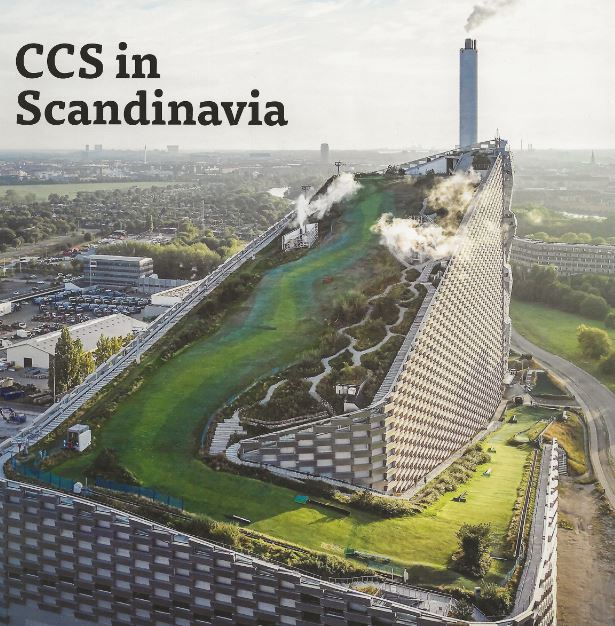
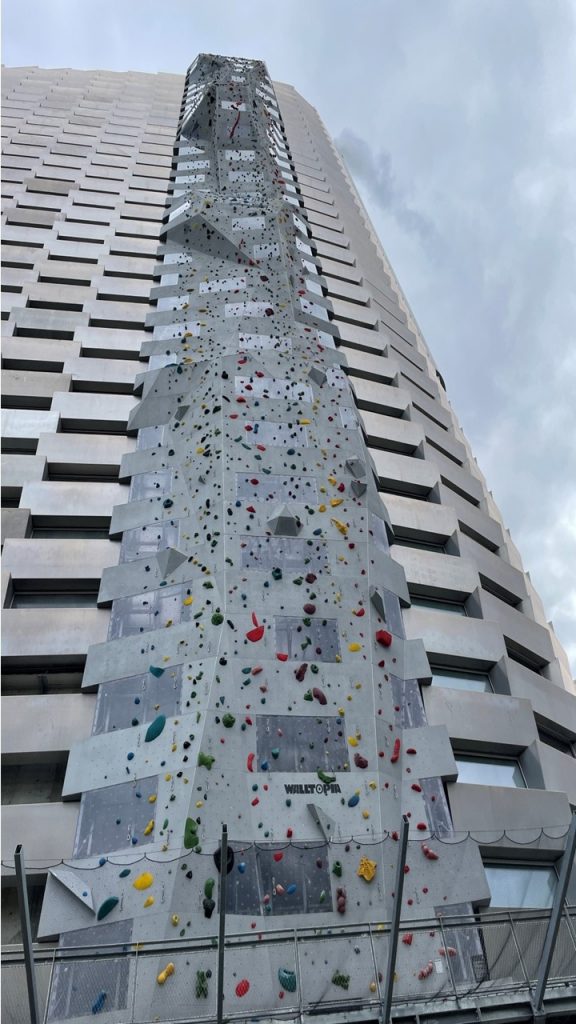
The next morning, we said goodbye to our new friends and travel guides, boarded our plane, and headed for home.
